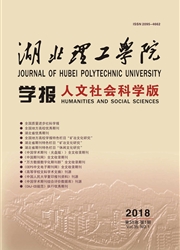

 中文摘要:
中文摘要:
基于标准差、变异系数及Theil系数,着重从入境旅游人数及国际收入两方面,分析与探讨2005-2012年海西旅游区形成前后的区域差异演变情况。研究结果表明:(1)海西旅游区入境旅游发展的绝对差异在扩大,但相对差异却略有减小;(2)该区域的入境旅游市际总差异、区域间和区域内差异都呈下降趋势,区域间差异是市际总差异的主要影响因素,而在区域内差异中,粤东潮汕文化旅游区各市间的差异较为突出;(3)海西八大旅游分区入境旅游呈现出以闽南滨海商贸旅游区为强力核心,其他旅游分区跟随发展的"众星捧月"格局。运用旅游资源指数和地理联系率研究发现,旅游资源禀赋、区域经济发展水平和区位条件是海西旅游区入境旅游发展区域差异的主要影响因素。
 英文摘要:
英文摘要:
According to the standard deviation,variation coefficients and Theil coefficients,this paper focuses on the inbound tourists and revenue to analyze the disparity between zones before and after the formation of the tourism zones on the west side of the Taiwan Straits from 2005 to 2012. The results show as follows.( 1) The absolute disparity is enlarging while the relative disparity is slightly decreasing in the inbound tourism.( 2) In the inbound tourism,intercity total disparity,inter-regional disparity and intraregional disparity are declining. The inter-regional disparity is the main factor on the intercity total disparity and the intercity disparity of Chaozhou-Shantou cultural tourism zone is an important part of intra-regional disparity.( 3) Of 8 tourism zones on the west side of the Taiwan Straits,the inbound tourism takes the seacoast business tourism zone in the south of Fujian as the centre,followed by the development of other tourism zones. This paper uses the tourism resources indexes and geographical contact rates for further studies and discovers that tourism resource endowment,regional economic development and regional conditions are the main factors on the disparity between inbound tourism zones on the west side of the Taiwan Straits.
 同期刊论文项目
同期刊论文项目
 同项目期刊论文
同项目期刊论文
 期刊信息
期刊信息
